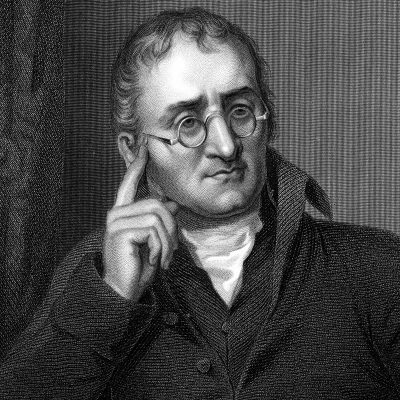
John Dalton, English meteorologist and chemist, a pioneer in the development of modern atomic theory.
The most important of all Dalton’s investigations are concerned with the atomic theory in chemistry. While his name is inseparably associated with this theory, the origin of Dalton’s atomic theory is not fully understood. The theory may have been suggested to him either by researches on ethylene (olefiant gas) and methane (carburetted hydrogen) or by analysis of nitrous oxide (protoxide of azote) and nitrogen dioxide (deutoxide of azote), both views resting on the authority of Thomas Thomson.
From 1814 to 1819, Irish chemist William Higgins claimed that Dalton had plagiarised his ideas, but Higgins’ theory did not address relative atomic mass. However, recent evidence suggests that Dalton’s development of thought may have been influenced by the ideas of another Irish chemist Bryan Higgins, who was William’s uncle. Bryan believed that an atom was a heavy central particle surrounded by an atmosphere of caloric, the supposed substance of heat at the time. The size of the atom was determined by the diameter of the caloric atmosphere. Based on the evidence, Dalton was aware of Bryan’s theory and adopted very similar ideas and language, but he never acknowledged Bryan’s anticipation of his caloric model. However, the essential novelty of Dalton’s atomic theory is that he provided a method of calculating relative atomic weights for the chemical elements, something that neither Bryan nor William Higgins did; his priority for that crucial step is uncontested.
Picture Credit : Google



